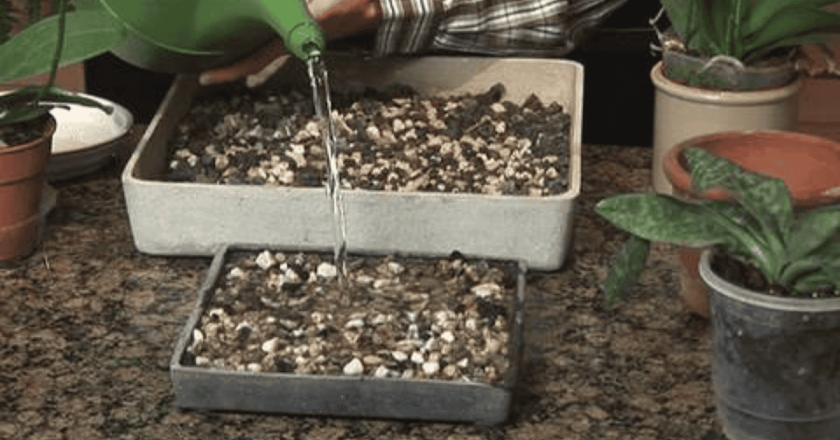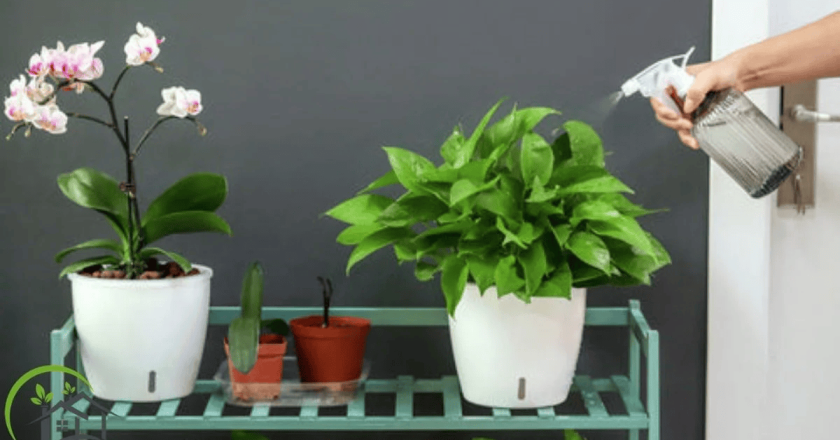It’s easy to love a garden when the weather is predictable—steady sunshine, a little rain, mild temperatures. However, the truth is that we are increasingly finding ourselves dealing with extremes. A sudden storm can rip through in minutes. A week-long heatwave can leave a garden scorched. And it raises the question: Which outdoor plants can really handle this new normal?
I didn’t think about it much until last summer. A freak storm snapped branches, flattened delicate flowers, and turned the soil into heavy mud. A few days later, a heatwave arrived, baking the ground until cracks appeared. Strangely, though, some plants barely flinched. They stood firm, green and resilient, as if nothing had happened. That was when I realised the importance of resilient garden plants—the ones designed by nature to bend, not break.
Why Weather-Resistant Plants Matter Now
Gardening used to be about aesthetics and maybe productivity. However, resilience has now become just as important. Weather-resistant plants are more than a convenience; they’re a necessity in a world where “unexpected” weather is becoming routine.
-
Storm-proof plants help anchor soil and prevent erosion.
-
Heat-tolerant plants conserve water and continue thriving under intense sunlight.
-
Drought-resistant plants reduce the burden of constant watering.
-
Climate-resilient plants adapt, offering stability when the environment feels unstable.
And perhaps the best part is this: many of these species aren’t just tough. They’re beautiful. They can form the backbone of a garden that not only survives storms and heatwaves but actually looks stunning through them.
Outdoor Plants That Withstand Storms
Let’s start with the chaos of heavy rain and winds. When you need hardy outdoor plants that won’t topple over or break easily, structure matters.
-
Ornamental grasses: Their flexible stems allow them to bend without snapping. In a storm, they sway rather than resist.
-
Lavender: Compact and well-rooted, lavender tolerates both wind and water with minimal fuss.
-
Hostas: Large leaves may take a beating, but the plant itself bounces back quickly.
Some plants also protect others. Shrubs, for example, act like windbreaks, shielding more delicate varieties behind them. That layering is a key aspect of clever garden design for plants.
Outdoor Plants That Endure Heatwaves
On the other hand, prolonged periods of heat and dryness put a garden to a different test. Here, heat-tolerant plants and drought-resistant plants shine.
-
Succulents and cacti: Masters at storing water, they shrug off scorching days. (For example, the Christmas Cactus adapts beautifully indoors but can also enjoy a shaded patio outdoors in summer.)
-
Rosemary and thyme: Mediterranean herbs that prefer dry soil and sunlight.
-
Agave and yucca: Structural, dramatic, and challenging.
These aren’t just survivors; they can be striking patio plants for hot weather. Their sculptural shapes also bring a modern edge to durable landscaping plants.
Combining Storm-Proof and Heat-Tolerant Choices
A truly all-weather garden isn’t built on one quality alone. By combining storm-resistant plants with heat-tolerant gardening choices, you create a balanced approach. For example:
-
Plant ornamental grasses beside succulents to soften the look while combining resilience.
-
Use shrubs like viburnum to shield compact plants for patios during storms, while still thriving in summer heat.
-
Include versatile plants like hydrangeas in pots—tough enough for wind, adaptable enough to handle fluctuating rainfall.
It’s about designing for uncertainty, not perfection.
Low-Maintenance Outdoor Plants for Busy Gardeners
Not everyone has time to baby their plants through extreme conditions. That’s why low-maintenance outdoor plants are so valuable. Many of the toughest species are also the least demanding.
Consider:
-
Snake Plant: Famously resilient indoors (guide here), but also adaptable outdoors in summer.
-
Peace Lily: Another indoor favourite (care guide here), thriving in shaded outdoor spots.
-
Money Tree: With its symbolic beauty and hardy structure, this plant (guide here) is surprisingly adaptable.
For a broader list of options, these 35 low-maintenance plants include many perfect Plants for Container and outdoor survival.
The Role of Containers in Storm and Heat Resilience
It may sound counterintuitive, but pots can actually help. With outdoor plants in containers, you can move them to shelter before storms or shift them into shade during a heatwave. This mobility adds an extra layer of protection.
For those with patios or balconies, container gardening ideas ensure beauty without fragility. You can create clusters of container-friendly plants that look intentional while staying flexible.
Extreme Weather Plants in Urban Spaces
City gardens face unique challenges. Heat radiates from concrete, storms funnel between buildings. Here, climate-resilient plants play a crucial role. Balcony plants need to endure both heat and wind. Herbs, compact shrubs, and succulents tend to perform best.
If you’ve ever seen a row of rosemary thriving on a balcony railing while delicate flowers nearby wilt, you’ll understand the difference choosing the right plant makes.
Oversized Outdoor Plants That Still Survive
Some people love bold, dramatic foliage even in unpredictable weather. That’s where oversized indoor plants offer inspiration. Outdoors, think of dwarf banana plants, large hostas, or hydrangeas in sturdy pots. With care, these tough plants for outdoor use can become focal points while still withstanding the elements.
Designing a Resilient Garden
A resilient garden isn’t just about the plants—it’s about how you arrange them.
-
Layering: Use hardy shrubs to shield softer flowers.
-
Drainage: Ensure pots and beds don’t waterlog during storms.
-
Shade planning: Place patio plants that thrive in hot weather in areas that receive afternoon shade.
-
Rotation: Move containers seasonally to adjust to changes in light and heat.
Think of it as choreography—plants protecting and supporting each other, rather than competing.
Garden Survival Plants: The Future of Landscaping
As weather extremes become more common, the definition of a beautiful garden may shift. It’s less about delicate perfection and more about endurance. Garden survival plants are not only practical but essential for sustainability. They require fewer resources, resist damage, and maintain green spaces when conditions are at their most challenging.
And perhaps that’s the heart of modern gardening: learning to adapt alongside the plants we grow.
🌿 Key Takeaways
-
Outdoor Plants that withstand storms and heatwaves are the backbone of resilient gardens.
-
Heat-tolerant plants, such as succulents and herbs, thrive even in intense sunlight.
-
Storm-proof plants such as ornamental grasses protect against wind and heavy rain.
-
Low-maintenance outdoor plants reduce stress for busy gardeners while staying durable.
-
Mixing climate-resilient plants with clever design ensures both beauty and survival in extreme weather conditions.
🌱 Final Thoughts
The best Outdoor Plants aren’t just about beauty anymore—they’re about resilience. From storm-proof plants that bend instead of break to heat-tolerant plants that continue to thrive when the sun blazes, these species enable us to keep gardens alive in uncertain times. They remind us that strength doesn’t always mean rigidity; often it’s the ability to adapt that makes survival possible.
Your patio, balcony, or backyard doesn’t need to be fragile. With thoughtful choices, it can become a place that weathers storms, withstands heatwaves, and still offers joy. And maybe that’s a lesson we can take for ourselves, too.
❓ FAQs
Q1. What are the toughest Outdoor Plants for storms?
Ornamental grasses, lavender, and sturdy shrubs are among the best storm-proof plants.
Q2. Can Outdoor Plants survive long heatwaves?
Yes. Many drought-resistant plants, such as agave, rosemary, and succulents, are ideal for heatwave gardening.
Q3. Are container plants more vulnerable to storms?
They can be, but mobility helps. You can move outdoor pots to safer spots before storms hit.
Q4. What makes a plant climate-resilient?
Climate-resilient plants adapt to a range of conditions—handling both dry spells and sudden rain without stress.
Q5. How can I make my patio more weather-resistant?
Select low-maintenance outdoor plants, plan for adequate drainage, and incorporate all-weather plants to ensure balance and durability.




